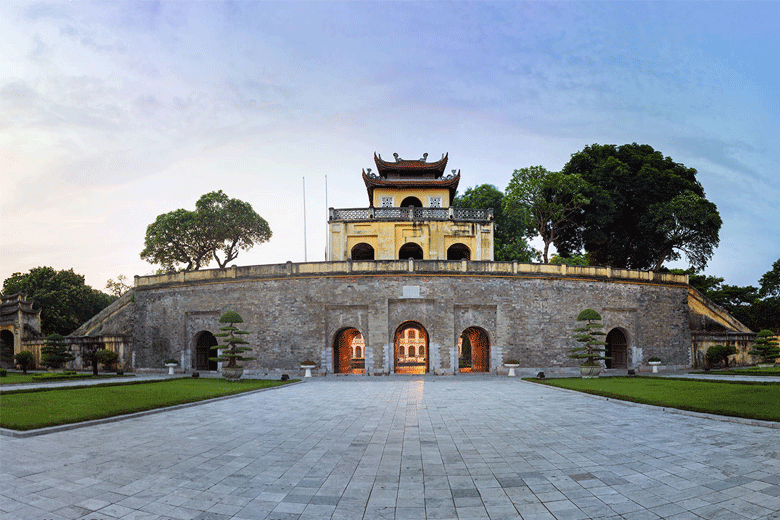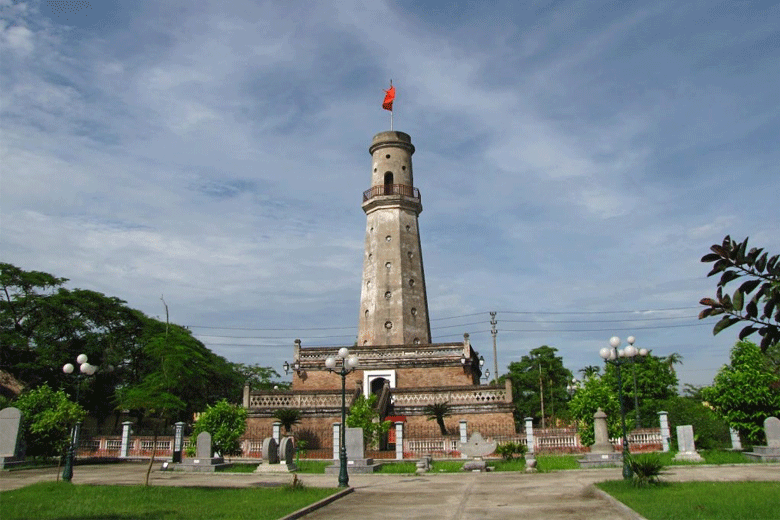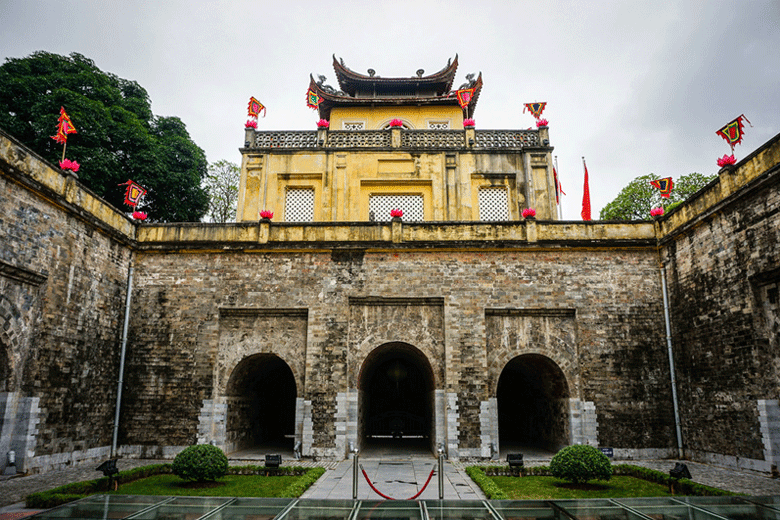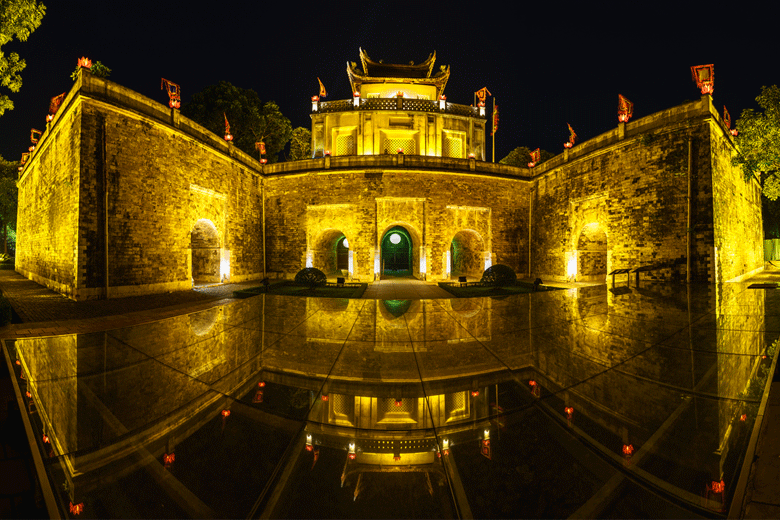Added to Unesco's World Heritage List in 2010, Hanoi's Imperial Citadel was the hub of Vietnamese military power for over 1000 years. Ongoing archaeological digs continue on-site, revealing remains of ancient palaces, grandiose pavilions and imperial gates. The main gate (Doan Mon) is named after one of the gates of the Forbidden City in Beijing. Further back is the imposing and colonnaded French Caserne de la Compagnie d'Ouvriers. At the rear is the Princess Pagoda (Hau Lau), which probably housed imperial concubines. The Imperial Citadel of Thăng Long is a complex of historic imperial buildings located in the centre of Hanoi, Vietnam. It is also known as Hanoi Citadel.
History

Imperial Citadel of Thang Long is associated with the history of Hanoi. This construction was built in several dynasties throughout different historical periods.
In the feudal era
In 1010, Dai La ( now is Hanoi) was chosen as the new capital of the country by King Ly Thai To in Ly Dynasty (1009 – 1225). Shortly after moving the capital, Imperial Citadel of Thang Long was built and finished in early 1011.
Artistic rendition of the central area in Ly dynasty

In the Tran (1226-1400) and Early Le dynasty (1428-1527), The Citadel was continued to be used. They repaired and kept on building new architectures.
The Imperial Citadel of Thang Long was severely damaged by wars during the period of Mac (1527-1592) and Le Dynasty (1593-1789).
Then, King Quang Trung (Tay Son Dynasty) (1778 – 1802) moved the capital to Phu Xuan (now is Hue), Thang Long was no longer the capital until the end of Nguyen Dynasty.
In the Nguyen dynasty (1802-1945), King Minh Mang was the one who changed the name of Thang Long into Hanoi, as called in present time.
Architecture

The ancient site was the political centre of the country for 13 consecutive centuries and served as the capital of Vietnam for eight centuries. A notable attraction in the Imperial Citadel of Thang Long was the Hanoi Flag Tower, a renovated 40-metre-tall stone fortress offering expansive views of Ba Dinh Square and Hanoi City Centre.
Geographical location

Imperial Citadel of Thang Long – Hanoi has a total area of 18.395 square meters and consists of two main parts:
The archaeological site at 18 Hoang Dieu Street

The central area, including Flag tower (Ky Dai), South Gate (Doan Mon), Kinh Thien Palace, Princess Pagoda (Hau Lau) and North Gate (Bac Mon).

The Imperial Citadel in Hanoi is located in 19C Hoang Dieu Street, Ba Dinh District, right in the center of Hanoi. It is surrounded by:
In the North: Phan Dinh Phung Street
In the West: Hoang Dieu Street
In the South: Dien Bien Phu Street
In the East: Nguyen Tri Phuong Street
This prominent site is only 2.5 kilometers from Hoan Kiem Lake, also within a 15-minute walk from attractions such as Quan Thanh Temple, Vietnam Military History Museum,…
Entrance fee
Adult: 30.000 VND (~ 1.3 US$) for Vietnamese and foreigners
Students: 15.000 VND (~ 0.7 US$) (Vietnamese ID, students card required)
Children under 15: Free
Opening hours
All the week, except Monday, from 8:00 to 17:00
Dress code
- Since the Imperial Citadel of Thang Long is a historical place, visitors should pay attention to the dress code as an act of respect.
- Not allowed: hats, shorts, miniskirts, tank-top,…
Address: 19C Hoàng Diệu, Điện Bàn, Ba Đình, Hà Nội 100000
Area: 18.395 ha (45.46 acres)
Phone: 024 3734 5427
UNESCO World Heritage Site inscription: 2010
Distance from La Sinfonía del Rey Hotel: 2.2 km - 10 min drive


 en
en TIẾNG VIỆT
TIẾNG VIỆT